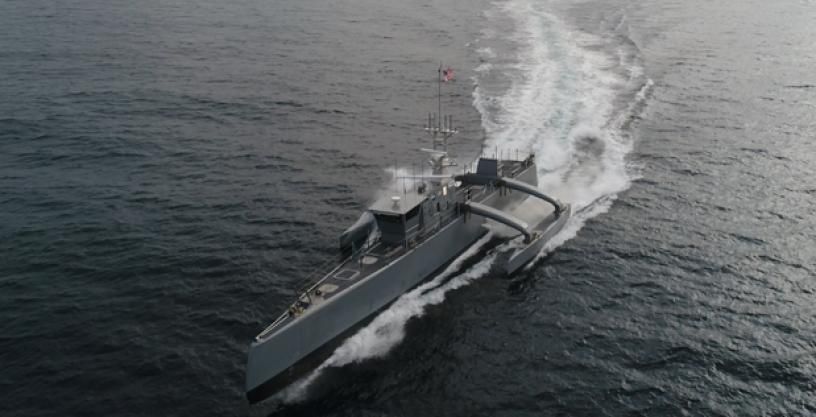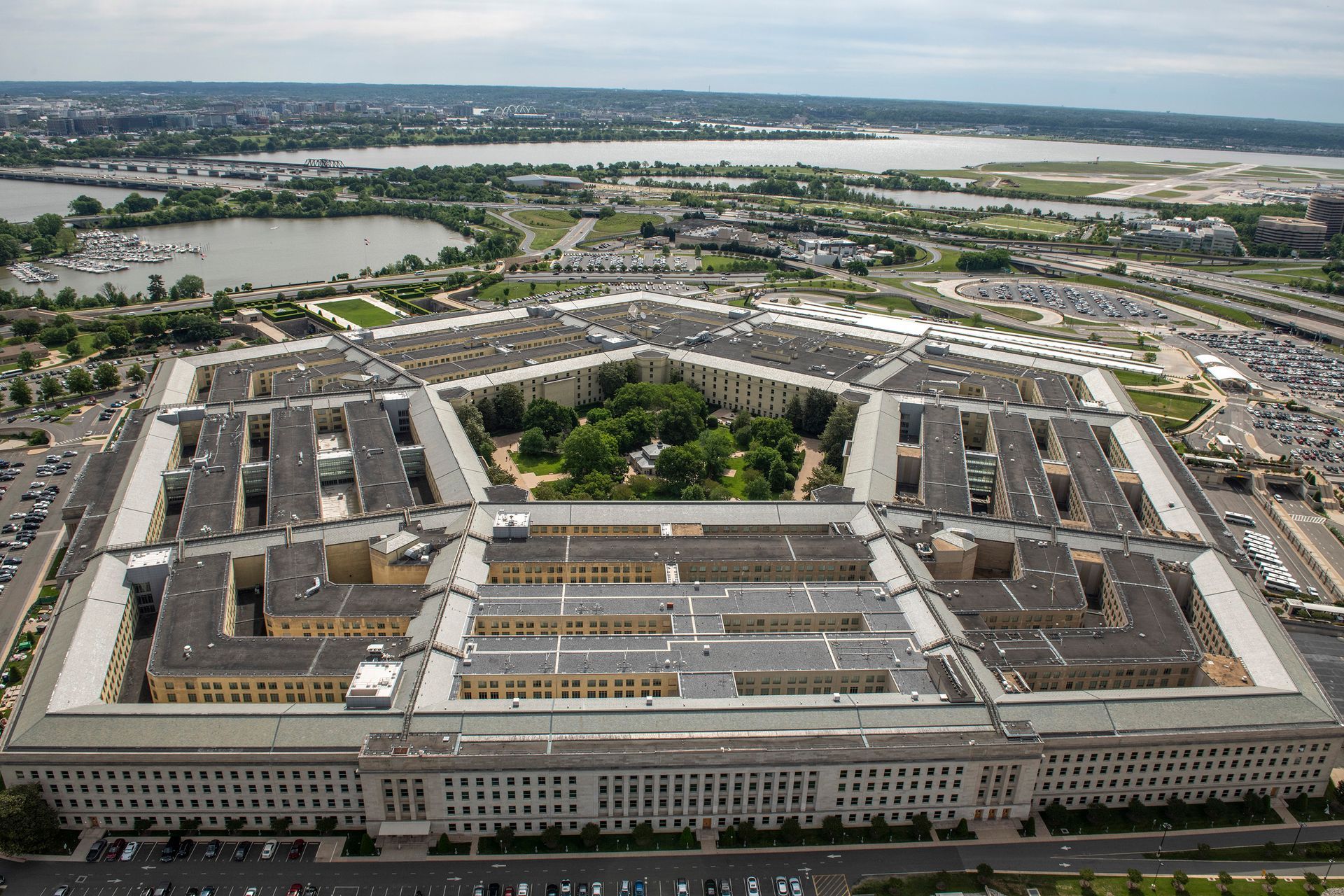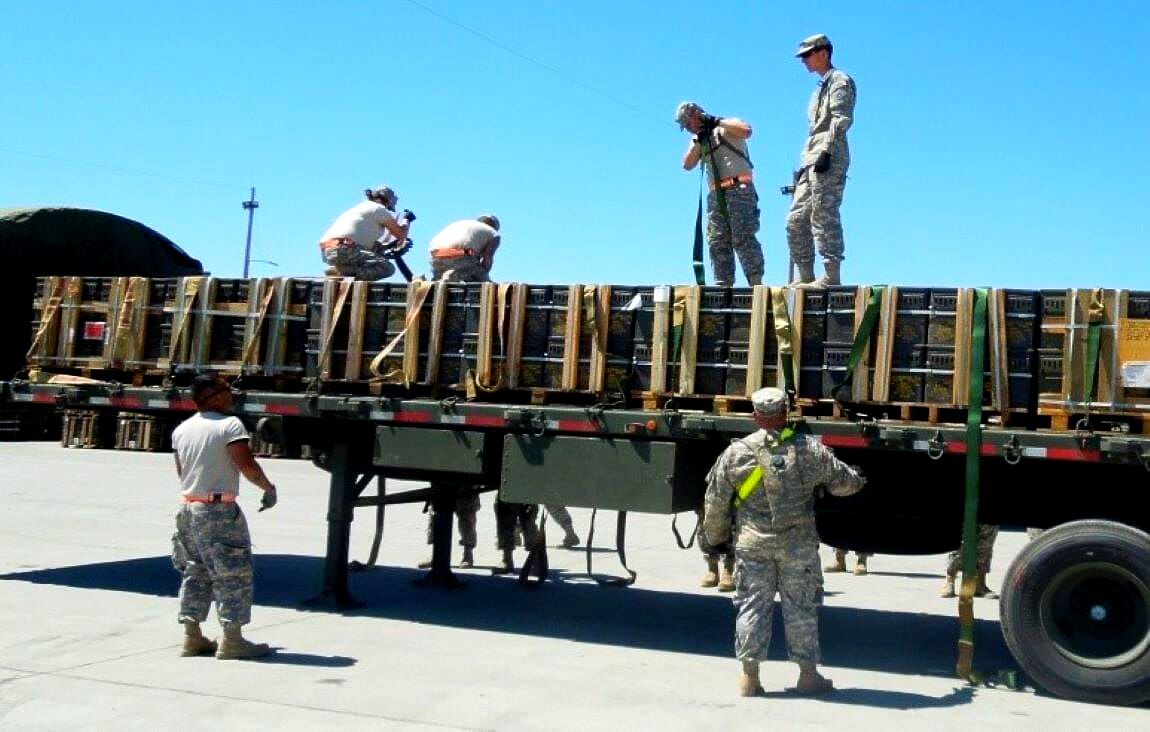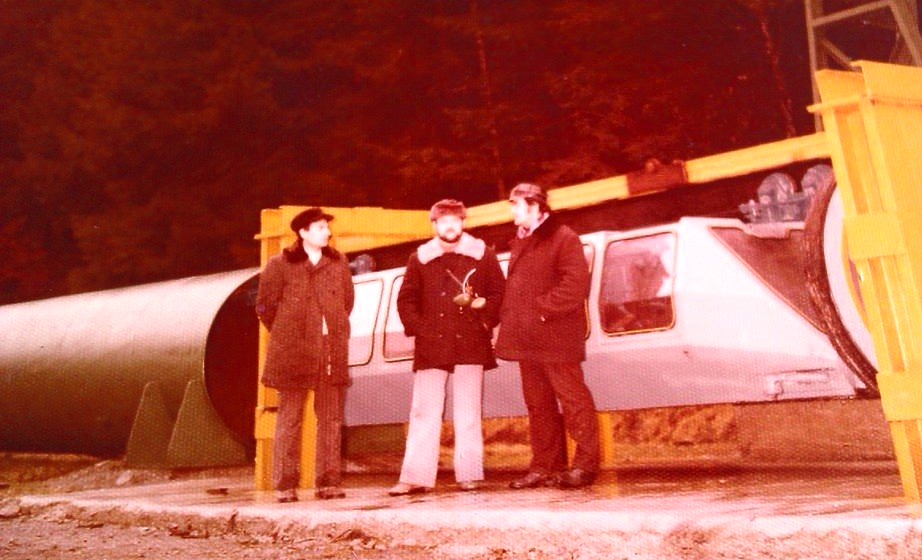World's Largest Naval Drone, The US Navy's Sea Hunter sets world record
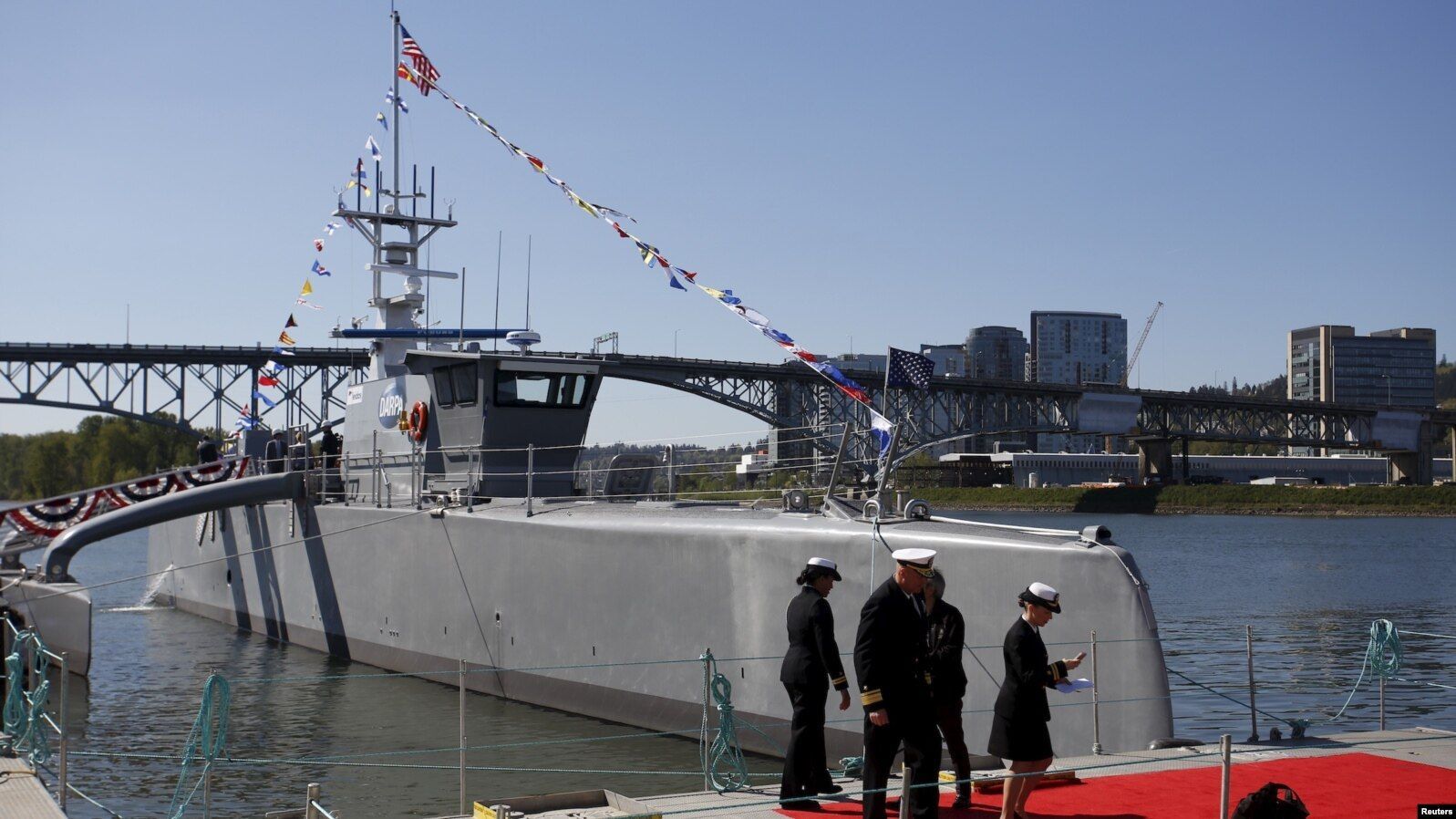
Portland, Oregon, United States--Sea Hunter, an autonomous unmanned surface vehicle (USV) launched as part of the DARPA Anti-Submarine Warfare Continuous Trail Unmanned Vessel (ACTUV) program, was designed and built by Leidos and was christened in Portland, Oregon; it is a 132-foot (40 meter)-long trimaran (a central hull with two outriggers), which sets the world record for being the World's Largest Naval Drone, according to the WORLD RECORD ACADEMY.
Photo: The autonomous ship Sea Hunter, developed by the Pentagon's Defense Advanced Research Projects Agency, is shown docked after its christening ceremony in Portland, Oregon. Photo: VOA
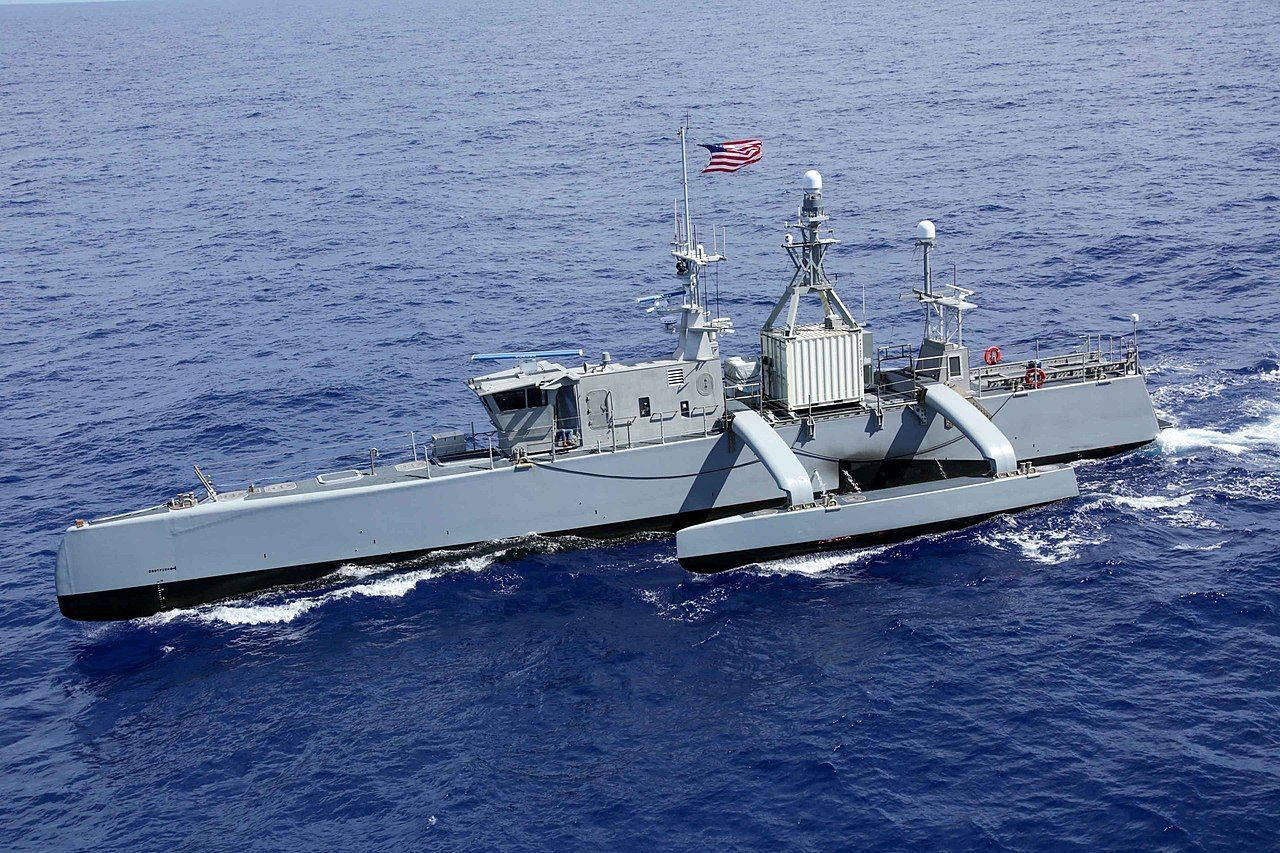
Photo: Medium displacement unmanned surface vessel Sea Hunter sails in formation during Rim of the Pacific (RIMPAC) 2022, July 28. Twenty-six nations, 38 ships, three submarines, more than 30 unmanned systems, approximately 170 aircraft and 25,000 personnel are participating in RIMPAC from June 29 to Aug. 4 in and around the Hawaiian Islands and Southern California. The world’s largest international maritime exercise, RIMPAC provides a unique training opportunity while fostering and sustaining cooperative relationships among participants critical to ensuring the safety of sea lanes and security on the world’s oceans. RIMPAC 2022 is the 28th exercise in the series that began in 1971. (U.S. Navy photo by Mass Communication Specialist 3rd Class Aleksandr Freutel)/Wikipedia
"Sea Hunter is an autonomous unmanned surface vehicle (USV) launched in 2016 as part of the DARPA Anti-Submarine Warfare Continuous Trail Unmanned Vessel (ACTUV) program. The ship was christened 7 April 2016 in Portland, Oregon. It was designed and built by Leidos.The vessel continues the line of experimental "Sea" ships, including Sea Shadow, Sea Fighter, Sea Jet, and Sea Slice. Sea Hunter is classified as a Class III USV and designated the Medium Displacement Unmanned Surface Vehicle (MDUSV). (Wikipedia)
"The initially unarmed prototype, built at a cost of $20 million, is a 132-foot (40 meter)-long trimaran (a central hull with two outriggers). It is an unmanned self-piloting craft with twin screws, powered by two diesel engines with a top speed of 27 knots (31 mph; 50 km/h). Her weight is 135 tons, including 40 tons of fuel, adequate for a 70-day cruise.
"Cruising range is "transoceanic," 10,000 nautical miles (12,000 mi; 19,000 km) at 12 knots (14 mph; 22 km/h) fully fueled with 14,000 U.S. gallons (53,000 L) of diesel, enough "to go from San Diego to Guam and back to Pearl Harbor on a tank of gas." Sea Hunter has a full load displacement of 145 tons and is intended to be operational through Sea State 5, waves up to 6.5 ft (2.0 m) high and winds up to 21 knots (24 mph; 39 km/h), and survivable through Sea State 7, seas up to 20 ft (6.1 m) high."

Photo: Sea Hunter, an entirely new class of unmanned ocean-going vessel gets underway on the Willamette River following a christening ceremony in Portland, Ore. Part the of the Defense Advanced Research Projects Agency (DARPA)'s Anti-Submarine Warfare Continuous Trail Unmanned Vessel (ACTUV) program, in conjunction with the Office of Naval Research (ONR), is working to fully test the capabilities of the vessel and several innovative payloads, with the goal of transitioning the technology to Navy operational use once fully proven./Wikipedia
"Sea Hunter hosted tours from May 24th through the 27th, which attracted more than 1,600 visitors to the USV, including Christopher Diaz, Chief of Staff to the Secretary of the Navy. The tours included an overview of the USV, its deployment history, and the mission of Unmanned Surface Vessel Squadron One," the
NAVSEA reports.
“We welcomed the opportunity to showcase Sea Hunter at this year’s LA Fleet Week and to highlight our work in unmanned technology,” said Capt. Matthew Lewis, program manager of the Unmanned Maritime Systems program office. “USVs are vital to our mission of advancing autonomous operations and growing the Navy's future manned-unmanned Hybrid Fleet. Sea Hunter represents advanced naval technology, and we’re thrilled the public had the chance to glimpse the future of maritime warfare.”
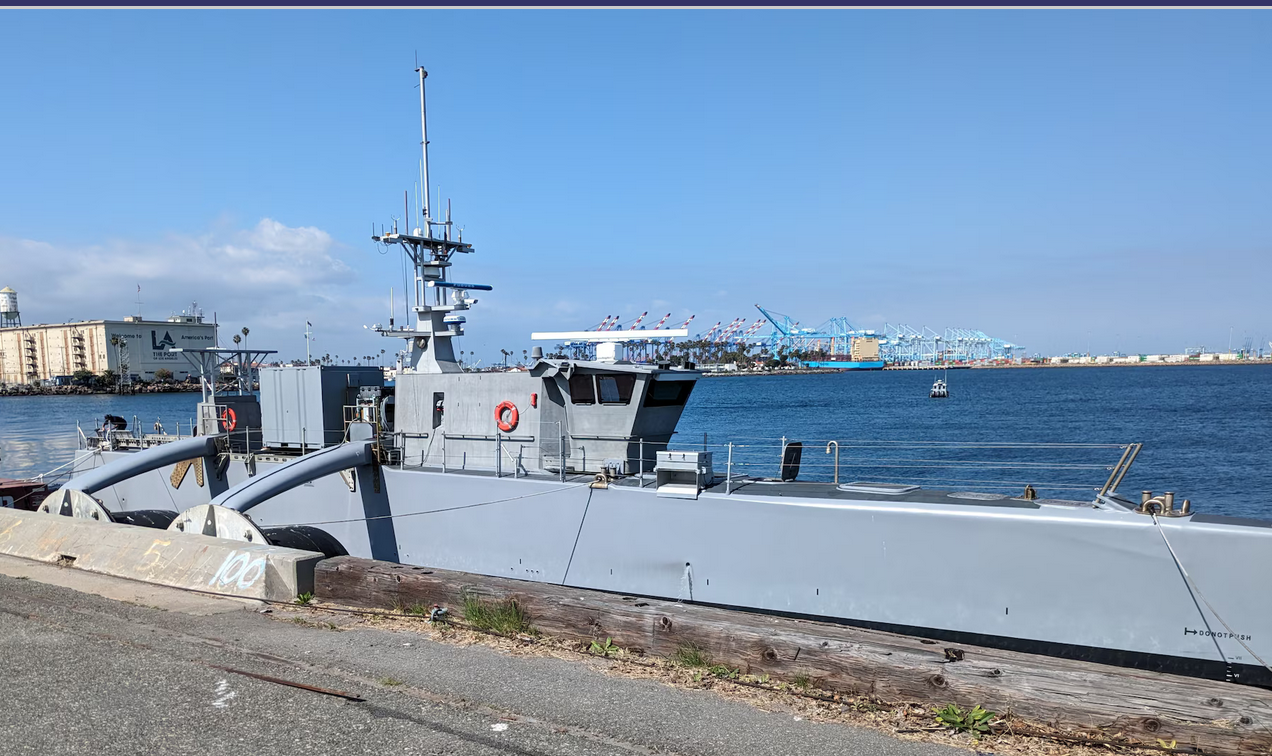
Photo: The U.S. Navy showcased Sea Hunter, part of the U.S. Navy’s unmanned surface vehicles (USV) prototype fleet, during Los Angeles Fleet Week, May 22-27. Sea Hunter hosted tours from May 24th through the 27th, which attracted more than 1,600 visitors to the USV, including Christopher Diaz, Chief of Staff to the Secretary of the Navy. The tours included an overview of the USV, its deployment history, and the mission of Unmanned Surface Vessel Squadron One. Photo: NAVSEA
"US defence research agency DARPA has developed Sea Hunter, a prototype unmanned submarine tracking vessel with the ability to autonomously patrol the seas for months on end at a fraction of current costs. Julian Turner investigates what this could mean for conventional submarine warfare," the Naval Technology reports.
"The Class III unmanned surface vessel (USV) has the potential to traverse thousands of kilometres of open ocean for months without a single crew member aboard and at a fraction of current costs – estimates range from $15,000-$20,000 a day compared with $700,000 a day to operate a destroyer. According to DARPA, Sea Hunter could ultimately lead to a whole new class of ocean-going vessel and eradicate the need for larger manned warships, transforming conventional submarine warfare."
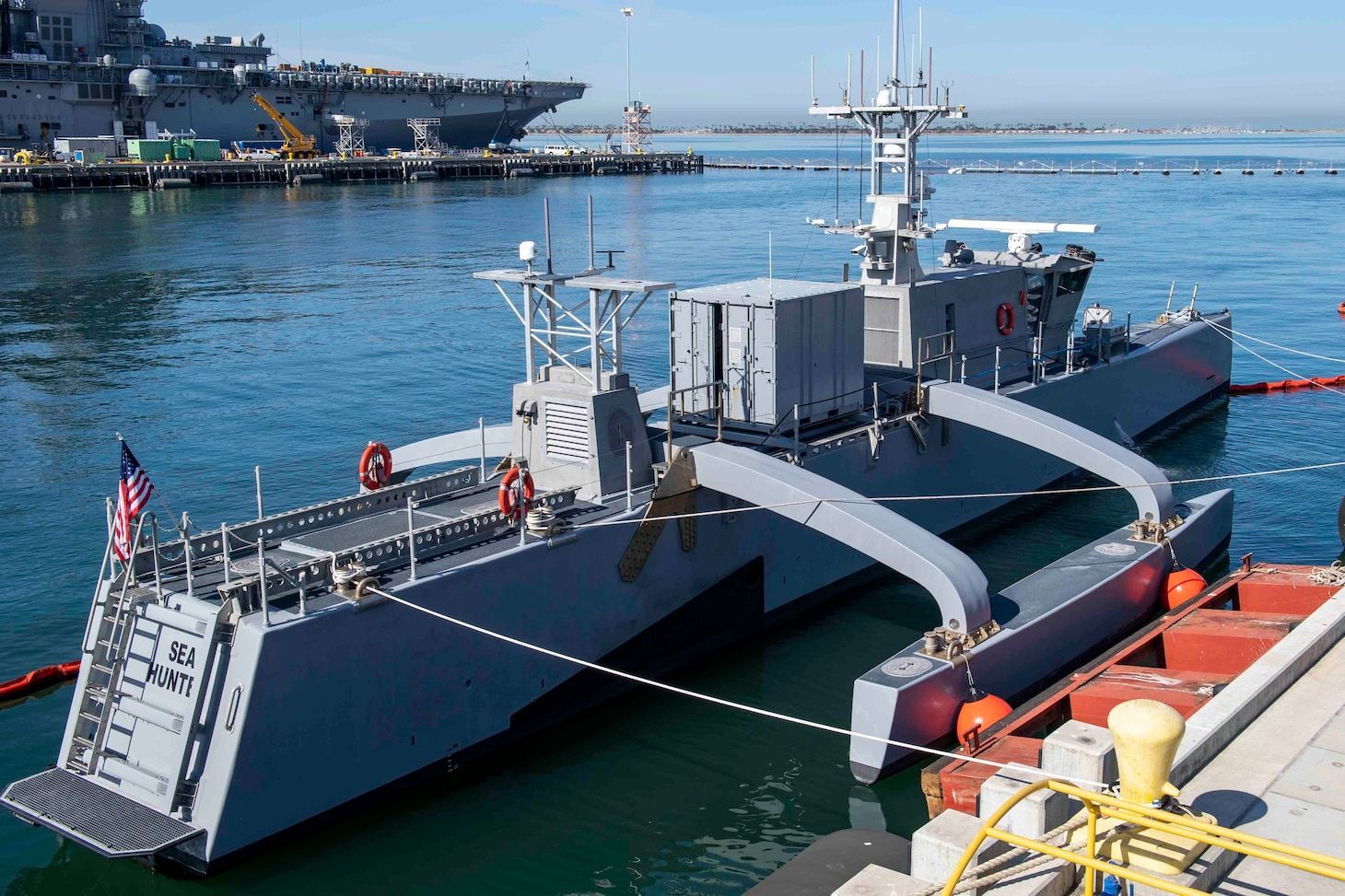
Photo: The medium-displacement unmanned surface vessel Sea Hunter sits pierside at Naval Base San Diego, during the Unmanned Surface Vessel Division (USDIV) One Establishment ceremony. USDIV One will focus on unmanned surface vessel experimentation and fleet advocacy for the surface force. (U.S. Navy photo by Mass Communication Specialist 2nd Class Kevin C. Leitner)./Navy.mil
"DARPA has successfully completed its Anti-Submarine Warfare (ASW) Continuous Trail Unmanned Vessel (ACTUV) program and has officially transferred the technology demonstration vessel, christened Sea Hunter, to the Office of Naval Research (ONR)," the darpa.mil reports.
"ONR will continue developing the revolutionary prototype vehicle—the first of what could ultimately become an entirely new class of ocean-going vessel able to traverse thousands of kilometers over open seas for months at a time, without a single crew member aboard—as the Medium Displacement Unmanned Surface Vehicle (MDUSV).
"In October 2016, DARPA and ONR began at-sea testing of Sea Hunter’s sensing and autonomy suites. Between February and September 2017, the vessel passed three progressively challenging tests to integrate the suites and use them to comply with International Regulations for Preventing Collisions at Sea (COLREGS) in operationally realistic scenarios."
Photo: DARPA has successfully completed its Anti-Submarine Warfare (ASW) Continuous Trail Unmanned Vessel (ACTUV) program and has officially transferred the technology demonstration vessel, christened Sea Hunter, to the Office of Naval Research (ONR). Photo: DARPA
"Measuring 132ft in length and capable of 27 knots, Sea Hunter is the world’s largest unscrewed ship and is designed as a trimaran, the name given to a multihull vessel comprising a main hull and two smaller outrigger hulls (or ‘floats’) attached to it with lateral beams," the
NRI Digital reports.
"A successful joint test with DARPA’s Towed Airborne Lift of Naval Systems – meaning Sea Hunter could handle communications relays, and intelligence, surveillance, and reconnaissance sensor packages – was followed by open-water testing of the vessel’s sensing and autonomy suites.
"Able to endure up to 90 days at sea without a crew and with an estimated range of 10,000 nautical miles, fleets of unmanned ships could also provide 24/7 protection for inlets, harbours and other sensitive maritime locations, and deliver missiles, torpedoes and other supplies to vessels at sea."
